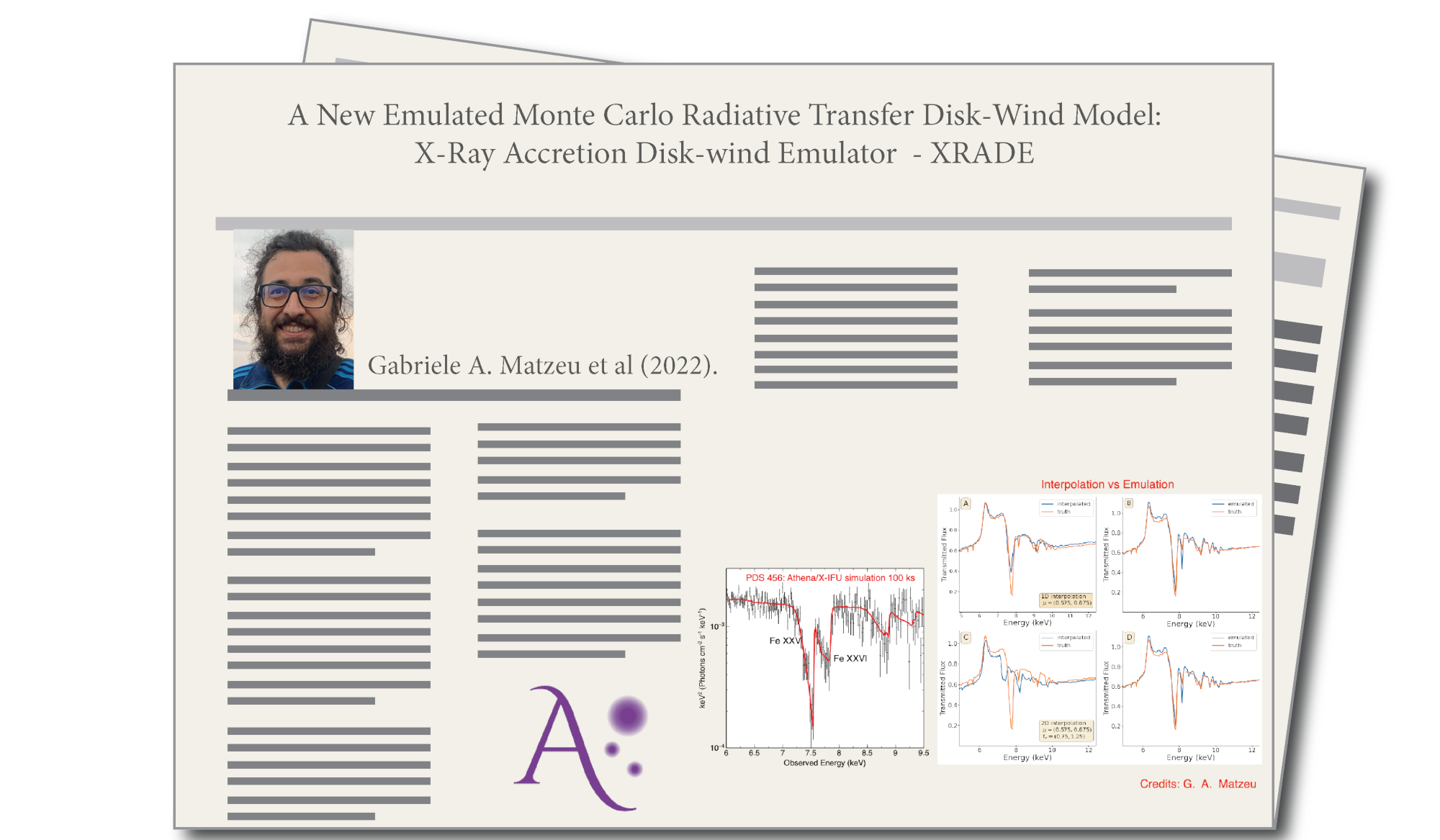
A New Emulated Monte Carlo Radiative Transfer Disk-Wind Model

By G.A. Mazteu
Ultra-fast outflows are very powerful disk-winds launched from the inner regions of accretion disks near their supermassive black holes. Their presence is observed via blueshifted absorption lines imprinted in the X-ray spectra of quasars and active galactic nuclei (AGNs) usually, but not always, in the Fe K band (~5-10 keV). The energy of the lines and their degree blueshifts suggest that the disk-winds are comprised of highly ionized material (He- H-like iron) that are outflowing at sub-relativistic speeds between ~0.1-0.5c.
Measuring the intrinsic physical properties of these winds can provide important insights into the mechanism through which they are launched, driven and accelerated which are currently not fully understood with the current CCD data. The exquisite high-resolution spectra that will be provided by the Athena/X-IFU micro-calorimeter detector will allow us to achieve an unprecedented level of detail that will shed new light into these questions. However, such advances in technology will require the development of higher resolution theoretical models that will inevitably be computationally very demanding to generate.
In this paper, we present a state-of-the-art X-Ray Accretion Disk-wind Emulator (XRADE) built through a ground-breaking technique that combines Monte Carlo radiative transfer (MCRT) with supervised machine learning. The DISK-WIND model provides a physically-motivated, self-consistent treatment of both absorption and emission from a disk-wind by computing the local ionization state and velocity field within the flow and the emulation method consists in training the MCRT simulated DISK-WIND spectra into a purposely built artificial neural network (ANN). As a result, the trained emulator (XRADE) can generate (or emulate) a single synthetic spectrum in a fraction of a second, speeding up the process required by a standard MCRT pipeline by at least 5 orders of magnitudes.
For these reasons, XRADE will greatly facilitate the production of high-resolution DISK-WIND tables required to model the data observed from the Athena/X-IFU micro-calorimeter detector. We proudly anticipate that the emulation method will be an indispensable tool for the development of high-resolution theoretical models with the necessary flexibility to be optimized and implemented across a wide variety of X-ray spectral models and beyond. The other important result is that the emulation process does not suffer from interpolation issues with multi-dimensional spaces that are typically faced by traditional X-ray fitting packages such as XSPEC.
Access to the manuscript in ADS.
